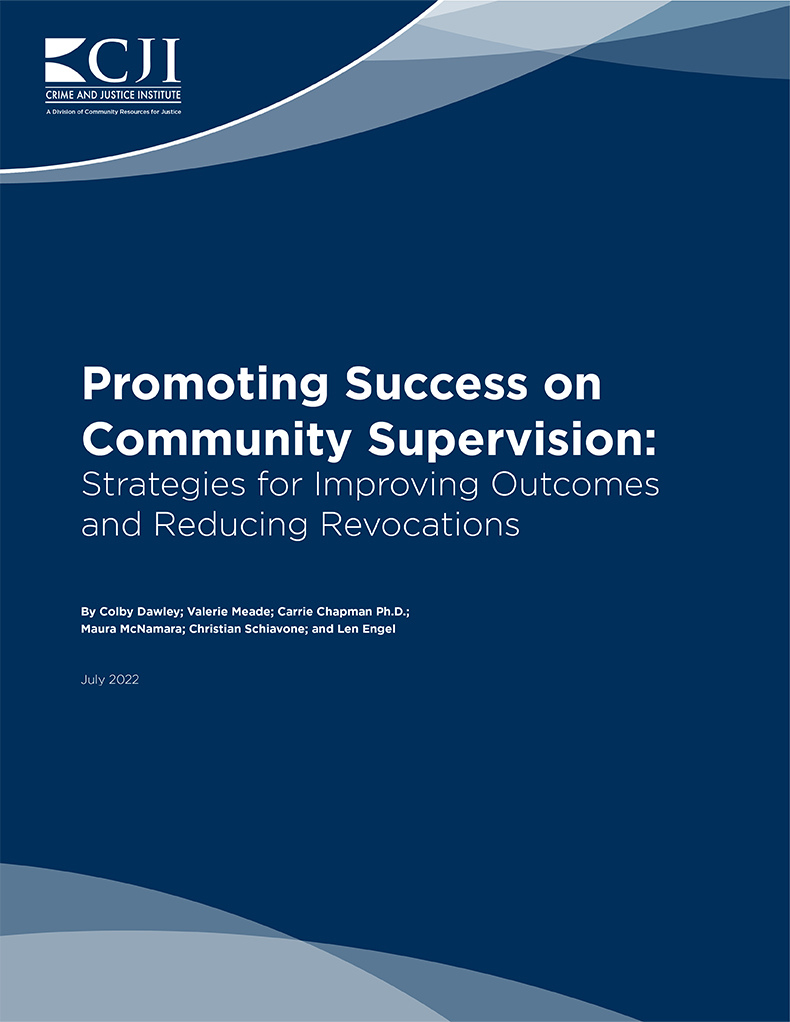
With support from Arnold Ventures, a non-partisan philanthropic organization, the Crime and Justice Institute (CJI) assessed supervision practices in four states: Colorado, Florida, Mississippi, and Montana. Each was selected to represent different characteristics of community supervision populations, including the size, demographic composition, and regional environment, as well as to include different mechanisms for a person to be put on supervision, including states that have parole and probation, states with just probation, and states that have additional supervision types.
Read the full reports here:
Improving Outcomes and Safely Reducing Revocations from Parole Supervision in Colorado
Improving Outcomes and Safely Reducing Revocations from Probation Supervision in Colorado
Improving Outcomes and Safely Reducing Revocations from Community Supervision in Florida
Improving Outcomes and Safely Reducing Revocations from Community Supervision in Mississippi
Improving Outcomes and Safely Reducing Revocations from Community Supervision in Montana
Over the course of 18 months, CJI assessed supervision policies and practices in these states to understand the factors impacting supervision outcomes, how current policies are aligning with best-practices, and what opportunities exist to produce better results. This included comprehensive data analysis, review of the administrative and legal frameworks governing community supervision, and conducting focus group interviews with stakeholders across each state. Additionally, a survey was disseminated in three of the five supervision agencies to better understand practices on the ground.
Based on the results of these analyses, CJI identified common challenges and gaps across all five agencies. These include:
- While revocation rates vary across all supervision types, rates are highest for those on post-incarceration supervision (such as parole), and lowest for those on supervision as an alternative to incarceration (such as probation).
- Revocation rates are highest among those individuals identified as high risk to recidivate and most revocations happen within the first year of supervision.
- Black and Native American individuals are disproportionately revoked.
- Despite technical violations frequently leading to revocation, absconding and new crime violations most often result in a revocation.
- A common barrier to individuals’ success on supervision is the fact that conditions are not tailored to individuals’ specific risks and needs, and challenges exist that limit officers’ ability to modify and align conditions more accurately.
- Although substantial efforts have been made to implement evidence-based practices, organizational culture has created gaps in staff buy-in, and limitations remain for implementing practices with fidelity.
These findings informed a broad array of recommendations tailored to each state’s unique context that could guide policymakers, agency officials, and other local stakeholders in alleviating the barriers to successfully implementing evidence-based practices. Recommendations include:
- Removing barriers impacting community supervision by individualizing conditions and narrowing them to only those that support public safety and expanding the use of tools that address barriers to reporting and treatment.
- Ensuring policies intended to improve outcomes are implemented with fidelity by maintaining and updating matrices, using clear definitions and guidelines for responding to violations, establishing quality assurance processes for evidence-based practices, and providing staff with ongoing coaching and training to ensure proper use of skills.
- Focusing resources on the initial period of supervision when individuals are most likely to fail and on those individuals assessed as high risk; to better allocate limited resources, agencies may shorten lengthy probation terms, strengthen early termination policies, and create alternative supervision types for low-risk individuals.
- Ensuring supervision agencies have the tools and resources necessary to effectuate lasting behavior change by assessing gaps in resources, requiring more consistent trainings, and strengthening the quality of treatment provided to the justice-involved population.
- Developing the infrastructure to support sustainable policies and practices intended to improve outcomes by strengthening organizational culture to support the use of evidence-based practices, improving the collection and reporting of data to inform data-driven decision-making, increasing education and communication related to the use of evidence-based practices, and continued analysis and reflection to fully understand the factors driving outcomes.